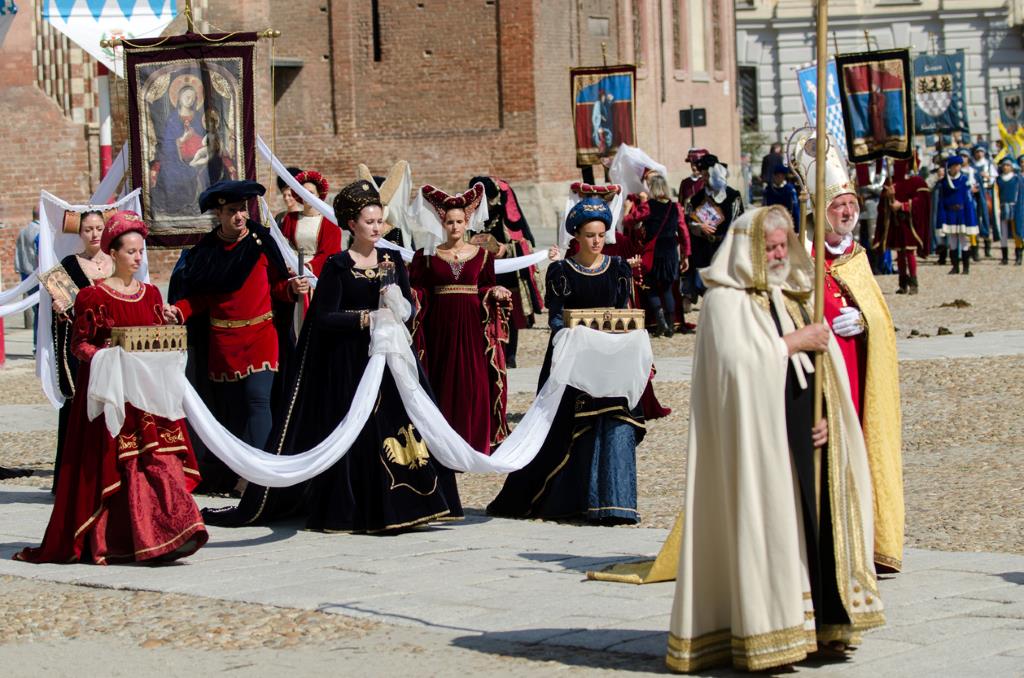Your Cart is Empty

The Renaissance period, spanning from the 14th to the 17th century, was a time of rebirth in art, culture, and fashion, and women's clothing during this era reflected the social, economic, and political changes sweeping across Europe. If you're fascinated by the elegance and complexity of historical fashion, join us as we explore the distinct styles of Italian, French, and English Renaissance women's fashion, and discover how each country's fashion tells a story of its people, culture, and artistic preferences. And who knows, you might just find your perfect Renaissance fit along the way. Let’s dive in!
It’s no understatement to say that the Italian Renaissance fashion set the standard for beauty, elegance, and opulence across Europe; luxurious fabrics, vibrant colors, and intricate details characterized the clothing of Italian women, and if you're drawn to the Italian Renaissance, you'll admire the emphasis on showcasing the human form through clothing that was both opulent and tastefully constructed.
The Italian Renaissance woman's wardrobe was a canvas for displaying wealth and social status; we’re talking sumptuous velvets, silks, and brocades that were fashioned into gowns featuring tight-fitting bodices and voluminous skirts. Sleeves were often detachable, allowing for a mix-and-match approach to outfits, a testament to the era's innovation in fashion. The use of slashing and pinking on fabrics also created patterns that added texture and depth to garments, making Italian Renaissance fashion uniquely recognizable.
As we journey into French territory, the Renaissance fashion landscape shifts; French Renaissance attire was typically marked by its sophistication and subtlety, a reflection of the French court's influence on fashion trends. This era in France introduced the world to new levels of craftsmanship and detail in clothing design.
The silhouette of French Renaissance women's clothing evolved to include the farthingale, which gave skirts a bell-like shape; equally, bodices became more structured, often featuring a square neckline that allowed for elaborate neck ruffs and intricate lace detailing. French fashion generally favored lighter fabrics than their Italian counterparts, with a preference for silk, brocade, and linen, adorned with delicate embroidery and pearls.
Crossing the English Channel, the fashion scene during the Renaissance period in England was heavily influenced by both Italian and French styles but tailored to suit the English taste and climate; English Renaissance fashion was practical yet elegant, mirroring the country's social hierarchy and the Tudor court's ceremonial grandeur.

Typically, English women's fashion included gowns made from wool, velvet, and silk, reflecting the country's colder climate. The English also adopted the farthingale but favored a more conservative version than the French, while the use of ruffs, both at the neck and wrists, became iconic to English attire, along with elaborate headwear. Embroidery and jewel embellishments were also popular, emphasizing the wearer's status and wealth.
While Italian, French, and English Renaissance fashions each had distinct characteristics, they also shared similarities; firstly, the use of luxurious fabrics and the emphasis on displaying social status through clothing were common threads across Europe. However, the silhouette, fabric choice, and decorative elements varied significantly, reflecting each region's cultural and environmental factors.
It’s worth noting that Renaissance women's fashion wasn’t merely about aesthetics; it was also deeply intertwined with social and cultural dynamics, and clothing signified one's place in the social hierarchy, with laws sometimes dictating who could wear what. Fashion also played a role in the Renaissance's cultural rebirth, with artists and writers drawing inspiration from the beauty and intricacy of contemporary attire.
Overall, exploring Renaissance women's fashion from Italy, France, and England offers fascinating insights into the era's cultural richness and diversity; each country's style reflects its unique identity, values, and social structure, providing a colorful tapestry of history through fashion - with some cultural trends that even persist to this day! So if you're inspired by the elegance and complexity of Renaissance attire and want more Renaissance fashion insights, explore our collection to find your perfect renaissance fit.
Renaissance-inspired dresses today are designed to capture the essence of the era, combining historical accuracy with modern comfort and wearability. While some are meticulously crafted to reflect authentic designs, others blend contemporary elements for a more versatile appeal.
Absolutely! Renaissance dresses are perfect for themed events, festivals, and fairs. They offer a unique way to immerse yourself in the atmosphere of the Renaissance period, making your experience even more memorable.
To complement your Renaissance attire, consider accessories such as period-appropriate jewelry, headpieces, belts, and pouches. Footwear should also match the era, with leather boots or embroidered slippers completing the look.
Modern Renaissance dresses are designed with both authenticity and comfort in mind. Using breathable fabrics and adjustable features, these dresses can be both stunning and comfortable to wear throughout the day.